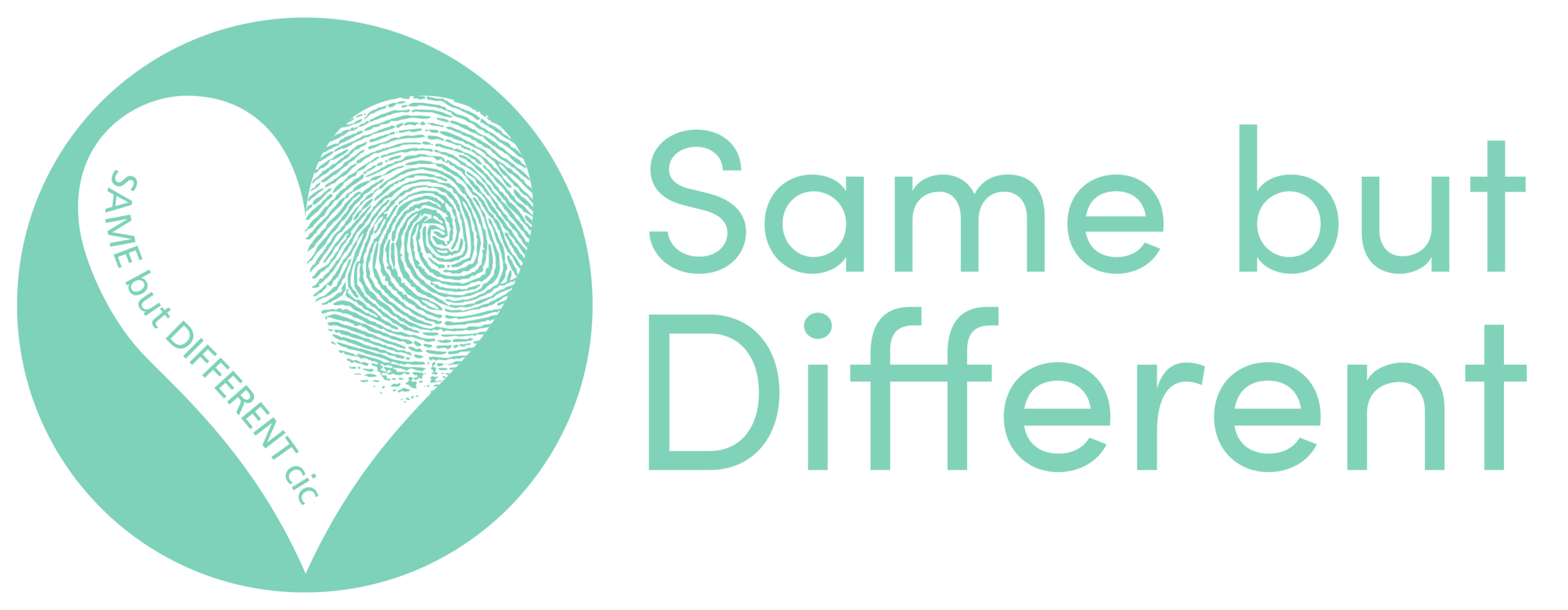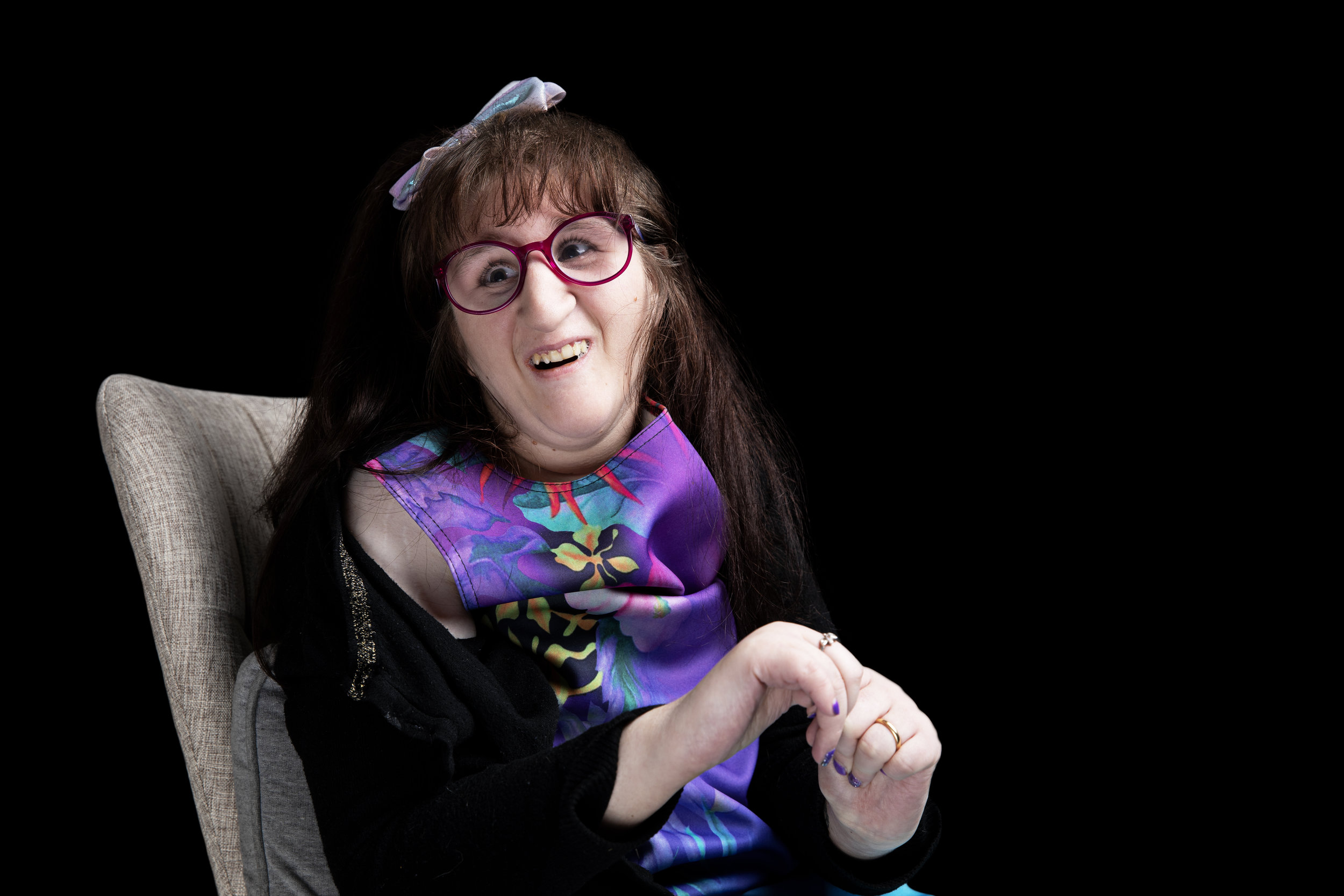Amy - Cockayne Syndrome
It was wonderful to spend some time with Amy and her mum. We had bumped into them at various events over the last couple of years including the Rickshaw challenge last year, as both our organisations were represented, but this was the first time for a proper chat. Whilst Amy’s condition means communication is a challenge her personality means she is great at getting her point across and her sense of humour was very evident throughout our photo shoot. Amy’s mum, Jayne, explained how a diagnosis had come about through determination, perseverance and quite a considerable journey.
“Amy has a combination of rare diseases, she has both Cockayne Syndrome and XRCC4. What it means for her is the DNA can’t repair itself and so she has a progressive degenerative condition.
We had an idea that there was possibly an issue from early on. She was premature and didn’t grow or put weight on like other children, and whilst we were introduced to a geneticist early on, they still weren’t sure it was a genetic issue. Despite being like a little pixie she could do the same as everyone else, until she reached about 11 ½, and then she started to drag her left leg, then she started to fall over, then developed a tremor and it just gradually got worse.
From the beginning I used to spend hours researching and looking through books as I just felt there was something, other than her prematurity, going on. When she was 5 I found a picture of a child with Cockayne syndrome that looked so much like Amy that when I showed my dad the photo he thought it was her. I spoke to a number of different geneticist throughout the UK but they all said it was not what she had. She lacked one of the main criteria, which is photosensitivity, however we have since discovered that in 25% of children they do not have that issue. I just kept pushing and pushing and desperately trying to get a diagnosis, which led to us going to America where they have different tests available. They found the mutation on the gene through a blood test and then fast forward to when she was 22, they found two XRCC4 mutations. This combination means that as far as we know Amy is the only person in the world with this combination.”
“In some ways having both these mutations has meant she has lived far longer than was originally thought. If she just had XRCC4 she would have developed leukaemia and it may have also slowed down her degeneration through the ERCC6.
It may seem extreme to people that we would go to such lengths to get a diagnosis, however, the need for me was that if there was anything, I could have done to help Amy, and to stop her from deteriorating I would have gone anywhere. It wasn’t that I needed the label it was more I needed the reason behind the name, and once I got the reason, once I knew that there was absolutely nothing that could be done at that moment, I knew that I’d done my best for her.
It took me years to find that Amy could have Cockayne Syndrome but as a parent I had that time whereas one GP or geneticist simply has not got the time to spend on one child. I don’t have a medical background at all, in fact we used to run pub restaurants, but you just do what you need to in order to find a way to help your child.”
“Before the symptoms started Amy was full of energy, crazy, an adrenaline junky. People said she had no fear. She did have fear she just lived life on the edge, probably knew she needed to. It’s almost like she lived her life on fast forward because she knew what was coming
Her initial symptoms started with a tremor. She’d be trying feed herself and she couldn’t pick things up, she stopped being able to fasten her shoe laces and her zip, things like that. We were able to find a medication that improved her tremor, so her life improved for a while. As her condition has deteriorated, she has really started to lose that spark. A lot of the time she really just doesn’t want to be here. She lives her life around seeing her friends. Every day she wakes and counts down until the next time she sees them. If they weren’t there, I just don’t want to think about how it would affect her.
At the time when Amy was diagnosed, there wasn’t anybody who specialised in Cockayne Syndrome in the UK. We started Amy and Friends to provide support for others with the condition. Seeing images of people doing things like climbing mountains and wearing Amy and Friend’s T Shirts is just amazing.”
What is Cockayne Syndrome?
Cockayne syndrome (CS) is a rare disorder, characterised by small stature, microcephaly (having a small head) , developmental delay and premature pathological ageing. It is caused by mistakes in one of two genes: CSA (also called ERCC8) or CSB (also called ERCC6). In order to develop CS, an affected individual must have mistakes in both copies of one of these genes. In most cases, each parent will be a carrier for the condition (i.e. they have a mistake in one of their copies of the gene). This is described as recessive inheritance and means that there is a 25% chance that any children the couple have will be affected by CS.
Cockayne syndrome is a variable condition, making early diagnosis difficult. Birth weight and head circumference are often normal, as is early development. Reduction in how fast an affected child grows, leading to small stature with a disproportionately small head (microcephaly), may be the first clue to the diagnosis. After the age of 12 months, development is often delayed. Other clinical problems in CS include hearing loss (of any type, but affecting both ears), cataracts, visual impairment due to retinal degeneration, tremor, walking and balance problems (ataxia), joint contractures, progressive loss of body fat and abnormal sensitivity of skin to sunlight. Affected individuals may not experience all of these features. Children with CS can look completely normal early in life, but many develop a sunken appearance to their eyes, and some have facial features (eyes and nose) that appear a little closer together than expected (described as crowded facial features). (Source Amy and Friends)
You can contact Amy and Friends by clicking here.
If you wish to discuss this project or reproduce any images or story, please contact ceri@samebutdifferentcic.org.uk. The photographer on this project is Ceridwen Hughes (www.ceridwenhughes.com)



